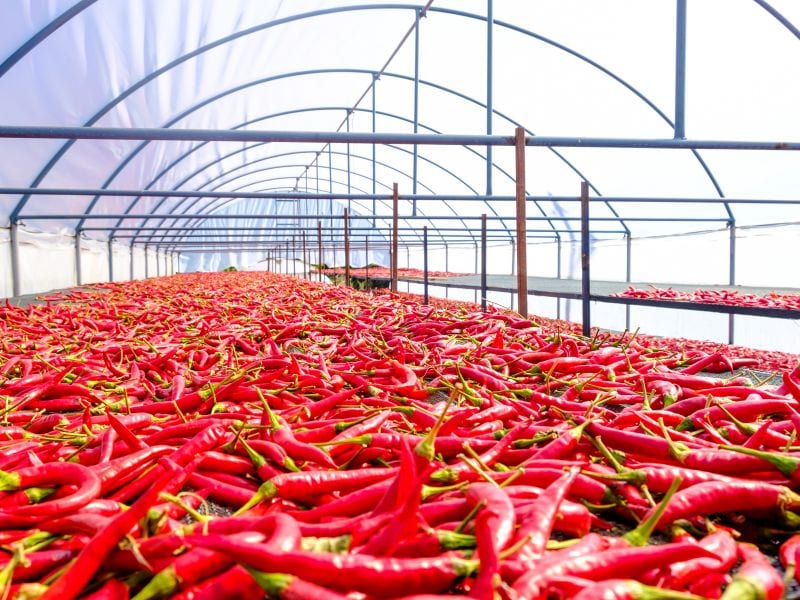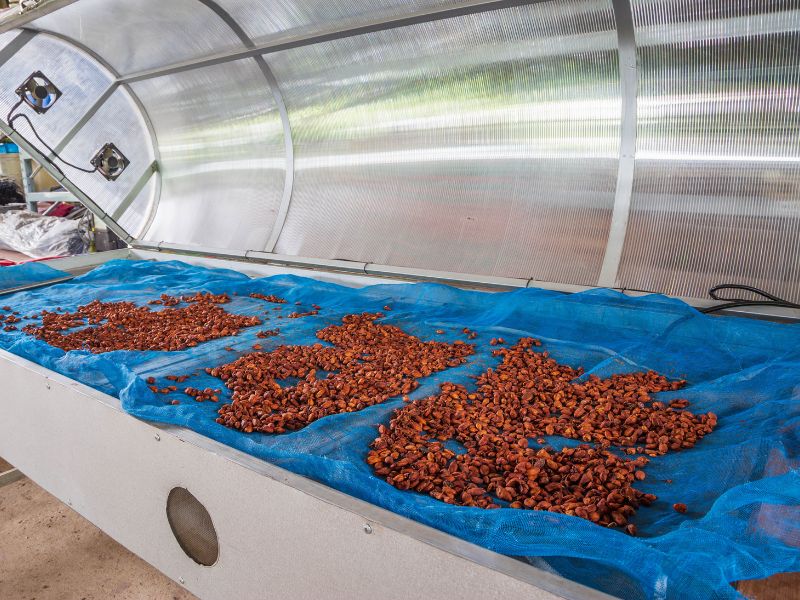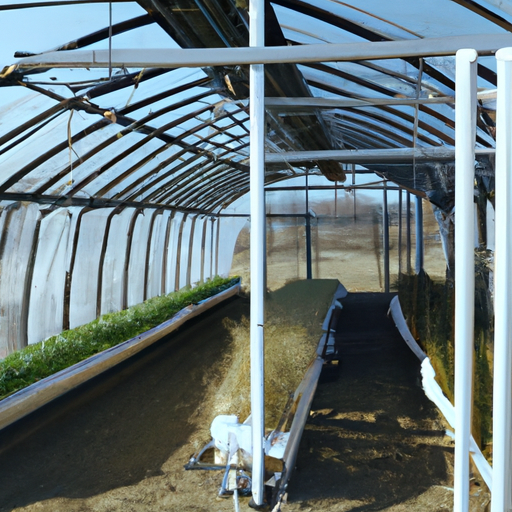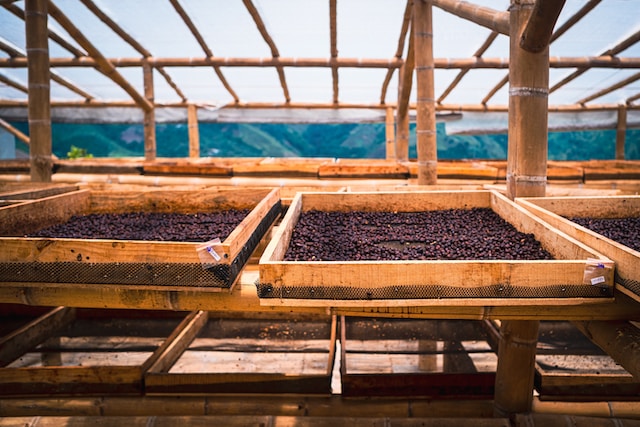Table of Contents
The Benefits of Greenhouse Drying for More Produce
Have you ever wondered how to get more produce out of your garden? Greenhouse drying is a great way to extend the shelf life of your fruits and vegetables and get more out of your harvest.
Greenhouse drying is a process that uses the sun’s energy to dry out fruits and vegetables. The process works by trapping the sun’s heat in a greenhouse and using it to dry out the produce. This method is much more efficient than air drying, as it uses the sun’s energy to speed up the process.
The benefits of greenhouse drying are numerous. For starters, it helps to preserve the produce for longer periods of time. By drying out the produce, it prevents it from spoiling and allows you to store it for longer. This means that you can get more out of your harvest and enjoy it for longer.
Another benefit of greenhouse drying is that it helps to reduce the amount of waste that is produced. By drying out the produce, you can reduce the amount of food that is thrown away. This helps to reduce the amount of waste that is produced and helps to keep the environment clean.
Finally, greenhouse drying helps to reduce the amount of energy that is used to dry out the produce. By using the sun’s energy, you can reduce the amount of electricity that is used to dry out the produce. This helps to reduce your energy costs and helps to make your garden more sustainable.
Overall, greenhouse drying is a great way to get more out of your harvest and help to reduce the amount of waste that is produced. By using the sun’s energy, you can dry out your produce quickly and efficiently, allowing you to get more out of your garden. So, if you’re looking for a way to get more out of your harvest, consider greenhouse drying!
How to Maximize Efficiency in Greenhouse Drying for Better Gardening
Gardening is a great way to get outside and enjoy nature, but it can be a challenge to preserve your harvest when it all comes in at once. That’s one area where your greenhouse may actually help. Greenhouse drying can be used to dehydrate and preserve your crop keeping them in optimal condition for food storage. Here are some tips to help you maximize efficiency in greenhouse drying for crops that can be dehydrated for later use.
First, make sure you have the right equipment. Investing in a good quality dehumidifier and fan will help to keep the air in your greenhouse dry and free of moisture. This will help to reduce the risk of mold and mildew growth, which can ruin your harvest.
Second, use the right materials. Choose materials that are breathable and allow air to circulate. This will help to keep the air in your greenhouse dry and free of moisture.
Third, keep the temperature consistent. Make sure the temperature in your greenhouse is consistent throughout the day. This will help to keep the air dry and free of moisture.
Fourth, use a timer. Setting a timer to turn on the fan and dehumidifier at certain times of the day will help to keep the air in your greenhouse dry and free of moisture.
Fifth, close up your greenhouse to trap the sun’s heat, but don’t let things get too hot! You should check frequently and adjust ventilation as needed early on in the drying process.
By following these tips, you can maximize efficiency in greenhouse drying for better gardening. With the right equipment, materials, and humidity levels, you can rapidly dry out a large harvest of peppers, beans, or anything else that takes well to dehydration.

Tips for Improving the Quality of Your Greenhouse Drying Process
1. Start with Clean and Dry Greenhouse: Before you begin drying your produce, make sure your greenhouse is clean and dry. This will help reduce the risk of contamination and ensure that your produce is of the highest quality.
2. Monitor Temperature and Humidity: Temperature and humidity levels can have a big impact on the quality of your drying process. Make sure to monitor these levels and adjust as needed to ensure optimal drying conditions.
3. Use Proper Ventilation: Proper ventilation is essential for successful drying. Make sure to open windows and doors slightly to allow for adequate air circulation.
4. Use Fans: Fans can help circulate air and reduce humidity levels. Place fans around the greenhouse to help move air and reduce moisture.
5. Use Dehumidifiers: Dehumidifiers can help reduce humidity levels and speed up the drying process.
6. Use Drying Racks: Drying racks can help keep your produce off the ground and allow for better air circulation.
7. Monitor Produce: Monitor your produce regularly to ensure it is drying properly. If it is not drying evenly, adjust the temperature and humidity levels or move the produce to a different location.
8. Rotate Produce: Rotating your produce can help ensure that it is drying evenly.
9. Use Proper Storage Containers: When you’re all done, make sure to use proper storage containers to store your dried produce. This will help keep it fresh and prevent contamination.

The Latest Technologies for Efficient Greenhouse Drying
Are you looking for ways to make your greenhouse drying process more efficient and eco-friendly? You’re in luck! There are a number of new technologies available that can help you reduce energy consumption and improve the quality of your product. Here’s a look at some of the latest technologies for efficient greenhouse drying.
One of the most popular technologies for efficient greenhouse drying is the use of solar energy. Solar energy is a renewable energy source that can be used to dry crops in greenhouses. Solar energy is free, abundant, and clean, making it an ideal choice for greenhouses. Solar energy can be used to power fans, which can help circulate air and reduce humidity levels in the greenhouse. Additionally, solar energy can be used to power dehumidifiers, which can help reduce moisture levels in the air.
Another technology for efficient greenhouse drying is the use of desiccant materials. Desiccants are materials that absorb moisture from the air, helping to reduce humidity levels in the greenhouse. Desiccants can be used in combination with fans to help circulate air and reduce humidity levels.
Finally, the use of advanced sensors and controllers can help improve the efficiency of greenhouse drying. Sensors can be used to monitor temperature, humidity, and other environmental conditions in the greenhouse. Controllers can then be used to adjust the fans, dehumidifiers, and other equipment to ensure optimal drying conditions. This can help reduce energy consumption and improve the quality of the product.
These are just a few of the latest technologies for efficient greenhouse drying. By utilizing these technologies, you can reduce energy consumption and improve the quality of your dehydrated products. So, if you’re looking for ways to make your greenhouse drying process more efficient and eco-friendly, consider investing in some of these technologies to level-up your operations.



